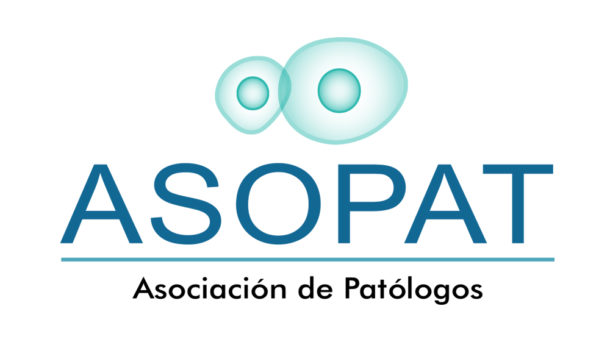six.2.1 Diagnosing this new Genus Revueltosaurus
Brand new holotypes out of Roentgen. callenderi (NMMNH P-4957), “Revueltosaurus” hunti (NMMNH P-29357), while the recently charged varieties “Revueltosaurus” (= Pekinosaurus) olseni (YPM 7666; Heckert mais aussi al., 2012 ) for each had been a single separated enamel which was the foundation to have its particular medical diagnosis. Lately, Heckert mais aussi al. ( 2012 ) detected the newest genus Revueltosaurus (spanning R. callenderi, Roentgen. hunti, and you can Roentgen. olseni) utilising the following blend of profile states: size (tooth crowns as much as 7 so you’re able to fifteen-mm extreme); several brief denticles (more than 7 per carina) that will be counterbalance (sub-perpendicular) toward enamel margin; denticles proportionately brief and sometimes used to the enamel of the perfect occlusion; diminished a real cingulum; premaxillary enamel crowns which can be approximately doubly tall due to the fact maxillary/dentary enamel crowns and you will weakly recurved; and you can maxillary/dentary enamel crowns phyllodont (leaf-shaped). grams., Ezcurra, 2016 ). Particularly, the mixture of one’s sized tooth, how many the fresh denticles, while the positioning of your own denticles overlap together with other distantly related taxa (elizabeth.grams., Silesaurus opolensis, Dzik, 2003 ; Azendohsaurus madagaskarensis, Flynn et al., 2010 ). The type “denticles proportionately quick and regularly worn on the tooth because of the specific occlusion” lacks accuracy regarding what exactly is noticed “small,” as well as the wear trend is tough to help you exclude various other taxa and you will relies on a particular age tooth when you look at the replacement duration (we.elizabeth., younger pearly whites would not be diagnosable since there wouldn’t be worn). Additionally, the absence of apomorphic profile says (e.grams., absence of cingulum) really should not be utilized in an analysis, as they are symplesiomorphies. Additionally, the fresh new assignment out-of tooth position centered on one tooth (elizabeth.g., premaxillary tooth crowns are around two times as extreme because maxillary/dentary enamel crowns and you may weakly recurved; maxillary/dentary tooth crowns leaf formed) can’t be determined regarding unique type of topic, and also with more teeth from the same area, simply craniodental topic that have pearly whites can provide the relationship of tooth profile and you can tooth position. Ergo, brand new advised enamel status of your own holotype teeth away from K. hunti and you can P. olseni is believed predicated on an enthusiastic inferred personal reference to R. callenderi, that’s known off craniodental thing having white teeth (find more than). To summarize, this new genus Revueltosaurus sensu lato can not be adequately and you may sustainably detected in line with the particular materials away from R. callenderi, K. hunti, and you can P. olseni and now we ergo limit new genus to at least one kinds, R. callenderi. As a result, we propose that “R”. hunti take care of the subjective junior word Krzyzanowskisaurus hunti once the erected because of the Heckert ( 2005 ) and “R”. olseni take care of the personal elder word Pekinosaurus olseni. We further caution the fresh task of every existing separated enamel taxa in order to Revueltosaurus.
I perform realize that subsequently, with done topic, Roentgen. callenderi, Krzyzanowskisaurus hunti, and you may Pekinosaurus olseni can get portray a monophyletic genus Revueltosaurus, but a project of all the about three types to a single genus is not currently you are able to because helps make a the priori assumption from the relationship (get a hold of lower than) which is synchronous towards the amazing disagreement that the Revueltosaurus white teeth was in fact assignable to Ornithischia to begin with. This might possess undesired flowing effects with the then macroevolutionary training (elizabeth.g., biogeography and you will paleocology). Alternatively, it is extremely possible that these taxa may begin out becoming distantly related.
6.2.2 What is Krzyzanowskisaurus hunti?
Heckert ( 2002 ) revealed “Revueltosaurus” hunti, after assigned to the brand new genus Krzyzanowskisaurus (Heckert, 2005 ), centered on remote teeth on Los Esteros Member of the brand new Santa Rosa Development (Dockum Class) when you look at the main The fresh new Mexico therefore the Bluish Mesa Person in brand new Chinle Formation during the eastern Washington (type locality off A great. geoffreyi-see ), and has been already recognized regarding lower Chinle Formation from inside the southeastern Utah ( , p. 16). Krzyzanowskisaurus hunti white teeth was well-known off Roentgen. callenderi white teeth by exposure from an effective ridge (“cingulum”) at the base of your tooth crown, and therefore connects to your carinae and that’s commonly denticulated (Heckert, 2002 , 2005 ; Irmis, Parker, ainsi que al., 2007 ; Figures 14a, b). Originally, Krzyzanowskisaurus is titled given the different morphology of the white teeth ranging from the 2 versions together with disagreement that Krzyzanowskisaurus pearly whites nonetheless was assignable so you can an enthusiastic ornithischian unlike an effective pseudosuchian (Heckert, 2005 ). Irmis, Parker, et al. ( 2007 ) disagreed to your task away from Krzyzanowskisaurus https://datingranking.net/tr/japan-cupid-inceleme/ hunti towards Ornithischia dependent on the similar objections discussing the difficulties off delegating remote teeth in order to ornithischians since the demonstrated in the past together with structure you to Heckert ( 2002 , 2005 ) identified as good “cingulum” was not homologous with similar formations when you look at the ornithischian dinosaurs. In addition, Irmis, Parker, ainsi que al. ( 2007 ) along with detailed you to definitely a good Revueltosaurus-such as for example squamosal, quadrate, and you can osteoderms have been including bought at an identical Washington locality because Krzyzanowskisaurus hunti teeth, exactly as had took place within form of area to have Roentgen. callenderi (Search mais aussi al., 2005 ).


Comentarios recientes